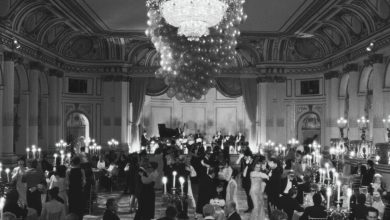Haruki Murakami Unpacks His T-Shirt Collection

Haruki Murakami has a lot of T-shirts — so many, in fact, that he no longer has space for them in his dresser and has resorted to keeping them in cardboard boxes.
His growing collection is the subject of a new book, “Murakami T: The T-Shirts I Love,” which will be published on Nov. 23 by Knopf.
Through a series of essays, written in Japanese and translated into English by Philip Gabriel, Mr. Murakami takes readers through a sartorial journey, sharing memories and musings through the lens of the clothes he has accumulated over the years.
Some of the shirts in the book serve as mementos of his travels and turning points in his life. Others are mysteries, like a yellow one with the name “Tony Takitani” on it, which he found in a thrift store in Maui. (An imagined Tony Takitani appears as the protagonist in one of Mr. Murakami’s short stories.)
The reclusive author has his fair share of kitschy T-shirts too, including one with the phrase “I put ketchup on my ketchup” emblazoned across the front. And there are many shirts in his collection that he’s too apprehensive to wear, especially when he doesn’t know the meaning behind them.
Ahead of the book’s release, which will be accompanied by a line of Murakami-themed T-shirts and accessories from Out of Print, Mr. Murakami answered some questions by email about his collection and what personal style means to him.
Your book is an ode to the most basic clothing item. At what point did you realize you had a collection of T-shirts, rather than just a lot of T-shirts?
I never really planned on having a T-shirt collection. It’s just that I’d see a shirt, think “That looks cool” and buy it, then buy another. Plus, people would give me shirts. As I stored them all away in drawers, before I knew it I had quite a pile of T-shirts on my hands. Even now I basically choose T-shirts that I want to wear every day. They’re usually affordable, so shopping for them is easy.
I never intentionally collected them — it’s more like that’s just the way things worked out. It certainly never occurred to me to make them into a book.
Each T-shirt seems to bring you back to specific moments in your life — meals you’ve consumed, people you’ve met in passing, places you’ve traveled. How does clothing relate to memory for you?
I got a lot of the shirts while traveling or when I lived abroad, and received many from people, so there are, of course, a lot of memories associated with them. It’s hard for me to throw them out when they get old, so they keep on piling up. The really ragged ones, though, I end up using when I wax my car.
What does personal style mean to you as a person in the literary world?
The greatest thing about being a professional writer — along with not having to commute or attend meetings — is being free to wear whatever I want. I hardly ever wear a tie, or leather shoes. During the summer, my go-to outfit is a T-shirt, shorts and sneakers, and when the weather gets cooler, I’ll wear a collared shirt or jacket over a T-shirt, and long pants instead of shorts. And I don’t have any plans to give up this comfortable, free lifestyle. In that sense, I suppose T-shirts symbolize freedom for me.
How does clothing figure in your development of a new character?
The kind of clothes people wear, and the way they wear them, expresses something — a lot in fact — about a person’s individual stance. Like it or not. So, describing what the characters in a novel are wearing is an important task for the writer. Just as much as describing what foods those characters like to eat, what music they enjoy listening to. I kind of enjoy describing clothes.
Many of these T-shirts were purchased at thrift stores. What do you like about that, and what challenges does that present?
I usually go to thrift shops searching for old LPs. Thanks to Goodwill and the Salvation Army, I’ve managed to buy quite a few unusual records (jazz and classical music), and at a cheap price, too. When I can’t find any good records, I’ll rummage elsewhere in the store, including the T-shirt section. I figure why not, as long as I’m here. Thrift shops in the U.S. are like amusement parks for me. I can easily spend hours there.
How did you come to possess a Brooklyn Pickle shirt? I’m from Syracuse and have gone to that deli on several occasions.
I had no idea what Brooklyn Pickle meant. I bought it in a thrift shop in the Boston area, if I recall, and I was puzzled for a long time about what sort of place (or store or organization) it was. For the longest time I wondered why, if it’s in Syracuse, they gave it the name Brooklyn. I’m happy to finally learn what it is. I see — so it’s a deli.
I have quite a few T-shirts like that, where I have no clue where they originally came from. Some have baffling messages on them, as well. I guess that sense of mystery is also one of the appeals of a T-shirt collection.
What clothing store do you visit most often?
This is a far cry from a thrift shop, but I like the Comme des Garçons store in the Aoyama neighborhood of Tokyo. It’s such a wonderful clothing store. I can always find a great jacket that goes perfectly with the ragtag T-shirts I’ve gathered. That said, I only go there maybe three times a year.
What is your single most-prized clothing item, T-shirt or not?
I don’t think I’ll be wearing it again, but it’s the T-shirt I got for completing the 1983 Honolulu Marathon, the first full marathon I ever finished. Whenever I see this shirt, it brings back a lot of memories.
This interview has been edited and condensed.





